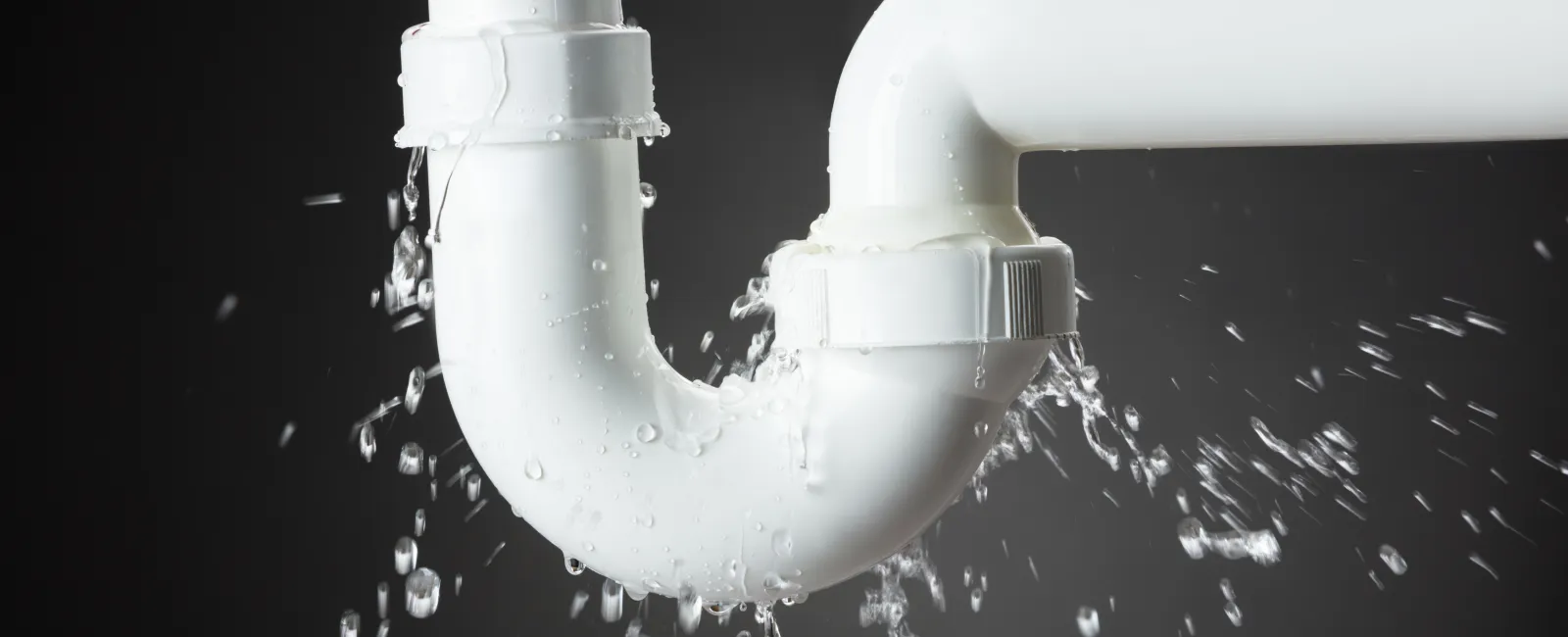To fix a leaky pipe, shut off the water supply, dry the area, and apply a temporary seal with plumber's tape or epoxy. For long-term plumbing leak repair, replace damaged pipe sections or call a professional at Dalmatian Plumbing. Quick action prevents water damage and avoids bigger, more costly repairs.
Learning how to fix a leaking pipe is one of the most useful home maintenance skills you can have. A leaking pipe may start as a small drip, but if left untreated, it can lead to serious water damage, increased utility bills, mold growth, and even structural issues. Whether you're facing a slow drip under the sink or a sudden spray from a burst line, knowing what to do—and when to call in a professional—can save you time and money.
What Causes a Leaking Pipe?
Why Plumbing Leaks Happen
Understanding the cause is key to choosing the right pipe leak repair method. Pipes can leak for a number of reasons—aging materials, high water pressure, corrosion, poor installation, shifting foundations, or even freezing temperatures. The most common culprits include:
Loose or damaged pipe joints
Cracks in the pipe from corrosion or impact
Deteriorated seals around fixtures or connectors
Clogs causing pressure buildup
Improper installation or DIY damage
If you've spotted a leaky pipe, the first step is to assess whether it's a slow seep or an active spray. This helps determine whether a temporary pipe repair will suffice or if full replacement is necessary.
How to Fix a Leaking Pipe: Step-by-Step
Immediate Action for Water Leak Repair
When water is leaking, time is of the essence. Here's how to fix a leaking pipe quickly while preventing further damage:
Turn Off the Water Supply
Locate your home's main water valve and shut it off to stop the flow to the leaking pipe. If the leak is near a fixture (like a sink), use the localized shut-off valve if available.Drain the Line
Open nearby faucets to drain remaining water from the pipes. This step is crucial before applying any pipe leak repair materials.Dry and Clean the Area
Use a towel to dry the area around the leaky pipe. A clean, dry surface ensures that repair products adhere properly.Apply a Temporary Repair
For emergency leak repair, you can use plumber's epoxy putty, waterproof tape, or a rubber patch and hose clamp. These options are not permanent fixes but will hold until a more durable solution is in place.Check for Further Damage
Inspect surrounding pipes, fittings, and walls for signs of moisture, warping, or mold. If multiple areas show symptoms, you may need comprehensive plumbing pipe repair services.
More Permanent Pipe Leak Repair Options
Once the immediate leak is under control, you can plan for a long-term fix. The best pipe repair method depends on the material and severity of the leak.
Copper Pipes: These often require cutting and soldering a new piece in place. It's a job best left to professionals unless you're comfortable with a blowtorch and flux.
PVC Pipes: Cracked or broken PVC sections can be replaced with new fittings and PVC cement. This is a manageable plumbing leak repair for handy homeowners.
PEX Pipes: PEX can be cut and spliced with push-fit connectors, making pipe leak repair relatively straightforward with the right tools.
If you're unsure what type of pipe you're working with or if the leak keeps returning, it's worth having a licensed plumber from Dalmatian Plumbing assess the damage.
How to Fix a Water Leak in Different Scenarios
Leaky Pipe Under the Sink
This is one of the most common issues homeowners face. If the leaking pipe is under a kitchen or bathroom sink, it's often a loose slip nut or worn-out gasket in the drain trap. Tighten the connections, and if that doesn't work, replace the damaged parts with a new trap assembly kit.
Wall or Ceiling Water Leak
A plumbing pipe repair inside walls or ceilings is more complex. Once the leak is located—often with the help of water stains or a moisture meter—you'll need to cut into the drywall, access the damaged pipe, and apply the appropriate pipe leak repair. Afterward, restore the wall or ceiling. In most cases, it's smart to call a plumber to avoid unnecessary damage or misdiagnosis.
Underground Pipe Leak
Outdoor leak repairs, like those in irrigation or main water supply lines, require digging and specialized tools. Signs include soggy patches in the yard or unusually high water bills. These are not DIY jobs and should be handled by professionals with the proper equipment.
Preventing Future Plumbing Leaks
Schedule Regular Inspections
Catching a leaky pipe early can prevent expensive repairs down the line. Have a licensed plumber inspect your plumbing system annually, especially if your home is more than 20 years old.
Replace Aging Pipes
If you live in an older home, your piping system might be nearing the end of its lifespan. Galvanized steel, in particular, is prone to corrosion. Proactive pipe repair or replacement can prevent recurring leaks.
Protect Pipes from Freezing
In colder climates, freezing is a major cause of burst pipes. Insulate exposed piping and keep the heat on during cold snaps—even when you're away.
Be Mindful of What Goes Down the Drain
Grease, food waste, and hair can cause buildup and pressure that leads to cracks and leaks. Avoid harsh chemical drain cleaners, which can erode pipe walls.
When to Call a Professional for Leak Repair
Some water leak repair jobs are too risky or complex for DIY fixes. Call a licensed plumber if:
You can't find the source of the leak.
The leak is inside walls, ceilings, or under concrete.
Water pressure has dropped noticeably.
Temporary fixes keep failing.
Mold or structural damage is suspected.
While a small drip might seem harmless, an untreated leaking pipe can lead to rot, mildew, and foundation issues. A professional will use leak detection tools and provide lasting solutions that protect your home.
Summary: Fixing a Leaking Pipe with Confidence
From quick emergency patches to long-term plumbing pipe repair, the key is acting fast, choosing the right solution for your pipe type, and calling in professional help when needed.
Understanding what causes leaks, like corrosion, high pressure, or improper installation, can also help you prevent future plumbing issues. Whether it's a pipe leak repair under your sink or a major water leak repair behind your walls, every homeowner should feel empowered to take the first step—and know when to pass the wrench to the pros.
Don't Wait—Protect Your Home with Professional Pipe Repair
If you're dealing with a leaking pipe, the smartest move you can make is to get ahead of the damage. Call your local plumber at Dalmatian Plumbing for a thorough inspection and professional plumbing leak repair before the problem escalates.
The sooner you act, the better your chances of avoiding long-term water damage and costly repairs. Whether it's an emergency leak repair or scheduled maintenance, get it done right and protect your home's plumbing system for years to come.


